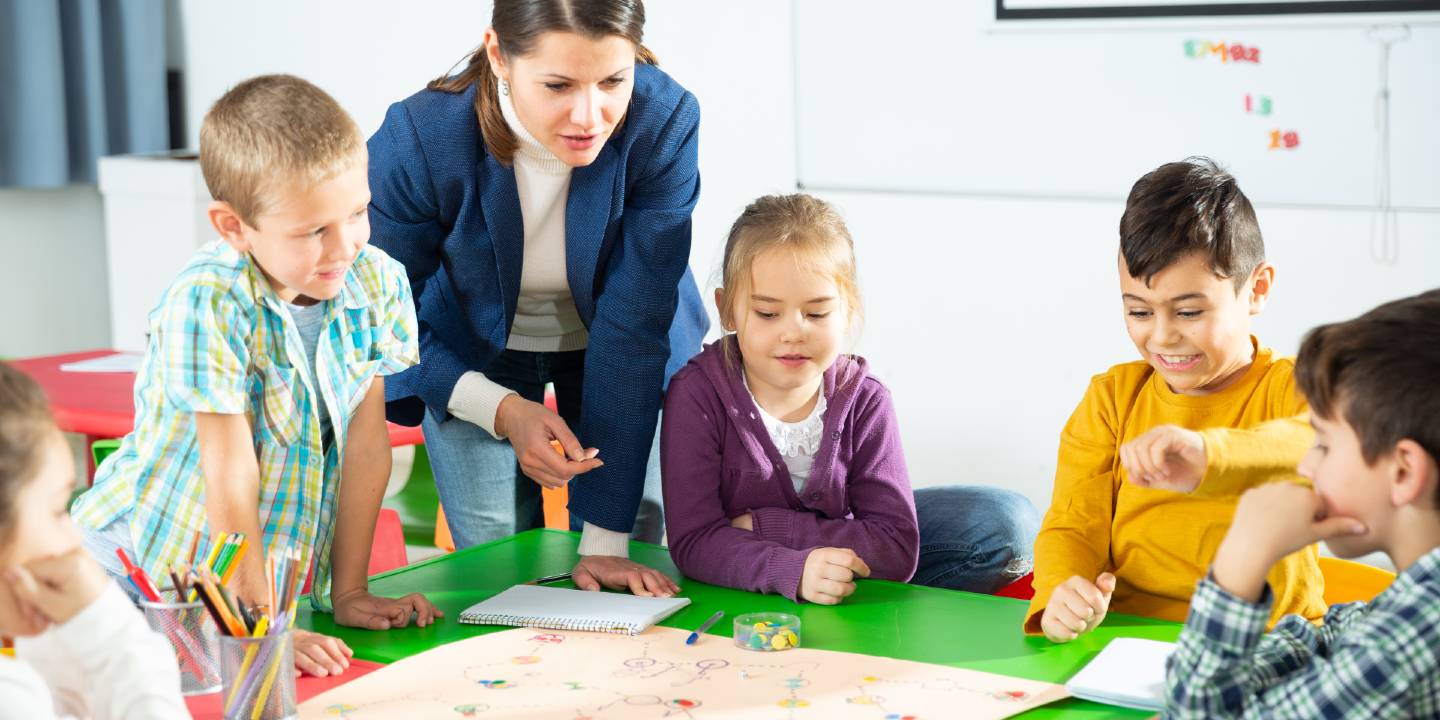
Strengthening playful practices in the classroom
Research 21 Apr 2022 7 minute readACER and LEGO Foundation have developed a framework to help improve the quality of learning through play at primary school.
Learning through play is considered an effective approach to teaching and learning in the early years. However, while the early years encompass children up to the age of eight, there is currently no common language for learning through play at school, or way to determine how well it is done.
Many educators and system stakeholders agree that more playful approaches would be beneficial to ease transition from pre-school to primary school, increase engagement and foster holistic skills – including creativity and problem solving. However, there is no commonly agreed way to talk about or implement this idea. Without a common language, learning through play at school remains in the ‘good ideas unrealised’ category of education research.
To overcome these barriers, ACER and the LEGO Foundation have developed a framework for learning through play that can be used to guide policy and practice. The new framework has the potential to create a better understanding of learning through play at school and improve the quality of implementation. Educators and systems can use this framework to identify alignment, gaps and opportunities to strengthen playful practices in the classroom.
Using a scoping review undertaken in 2019 as the foundation, the framework is built on an expanded definition of learning through play. The new definition states that learning through play occurs when:
- Children develop holistic skills by interacting with people, objects and representations (Department of Education and Training, 2016) in actively engaging, joyful, iterative, meaningful and socially interactive experiences (Zosh et al., 2017).
- Experiences are designed and facilitated to make effective use of available resources and integrate child-led, teacher-guided, and teacher-led opportunities (Marbina et al., 2011).
This new definition incorporates contemporary research about children’s experiences of play by considering the experience of the child, role of the facilitator, design of the activity and the desired learning outcomes. It is these attributes that encompass the four core components for effective implementation outlined in the framework. While systems already consider, evaluate and support pedagogy, design and outcomes, the framework provides a different lens to look at these elements with, in relation to learning through play.
The four components of the learning through play framework are:
Student experience of learning
How students experience learning is not often considered or evaluated. The experience component of the framework asks educators and systems to consider how they provide children with opportunities for joyful, actively engaging, meaningful, iterative and socially interactive learning.
Learning outcomes
The outcomes component asks systems to consider the extent to which a range of learning outcomes are included and connected to the curriculum. This is important as many systems place a strong emphasis on literacy and numeracy skills acquisition at the expense of whole child development.
Facilitation
With much debate about the best way to teach, the framework incorporates contemporary research on learning through play that acknowledges that a range of approaches are needed. This includes child-led and teacher-directed facilitation that depends on the intended learning outcome.
Design
The design component of the framework is about considering how well the available resources are used to achieve the intentions of the play experience. These resources include the students, facilitator, materials and environment.
An important feature of the framework is that it is ‘school ready.’ It considers the language of primary school and constraints of school learning, including accountability for skills attainment and curriculum content. The framework also includes key guiding questions that educators and systems can use to identify gaps. These questions could form action research projects for educators to investigate, gather data, trial approaches, revise and revisit in a typical inquiry cycle.
While the framework is an important step forward in the integration of learning through play into policy and practice, more research is required to understand how educators and systems can use the four components to determine the quality of their activities. Further research will help to arm educators with the tools needed to evaluate learning through play, determine the quality of its implementation and to develop a roadmap for improvement.
With a wealth of experience conducting research into learning through play, ACER can work together with school systems to design tools to measure associated skills. For example, ACER designed a bespoke measure of the skills associated with learning through play, such as literacy and social emotional learning in the early years of primary school for the LEGO Foundation. We can also support schools and teachers wanting to design and implement their own research projects to improve their use of learning through play in the school classroom.
Further reading
Read Learning Through Play at School – A Framework for Policy and Practice
Read the Learning Through Play at School scoping study
Read the practical guide on inquiry cycles and action research for professional learning
Learn about our project investigating the impacts of Learning Through Play at School in Ukraine
Learn more about ACER’s work in education and development